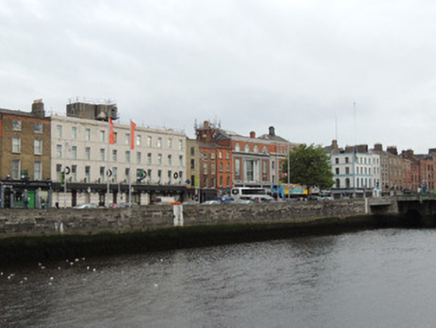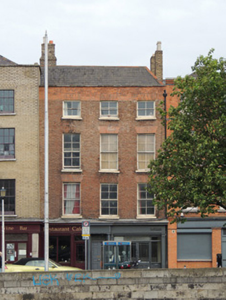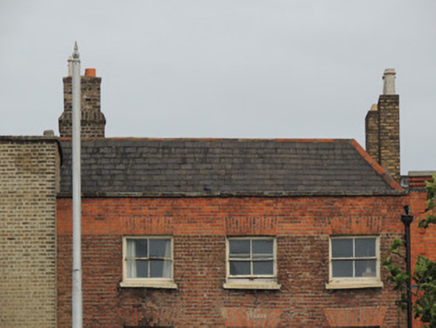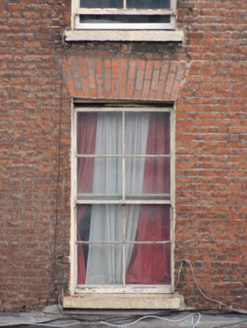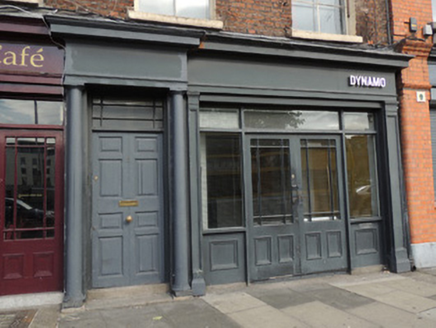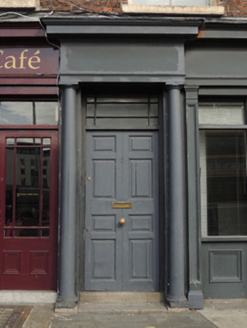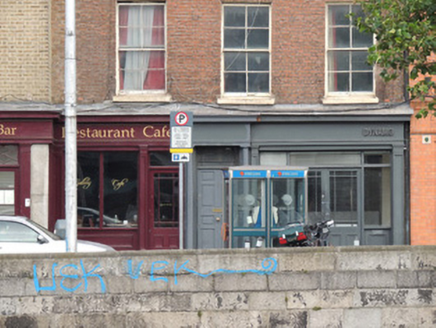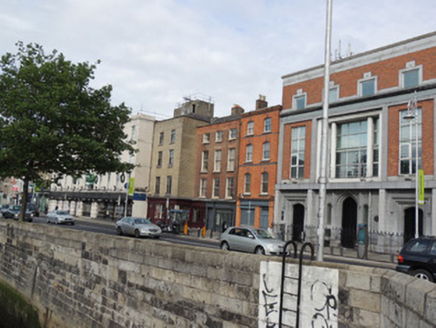Survey Data
Reg No
50070291
Rating
Regional
Categories of Special Interest
Architectural
Original Use
House
In Use As
Office
Date
1790 - 1810
Coordinates
315356, 234252
Date Recorded
21/09/2012
Date Updated
--/--/--
Description
Terraced three-bay four-storey former house, built c.1800, having later shopfronts inserted to ground floor. Now in use as office. M-profile pitched slate roof, hipped to east end to front (south) elevation, with terracotta ridge tiles and yellow brick chimneystack having clay chimneypots, rebuilt parapet wall with granite coping. Red brick wall laid in Flemish bond to upper floors. Square-headed window openings having timber sash windows; two-over-two pane to third floor, four-over-four pane to others, rendered reveals and painted sills throughout. Timber shopfront to ground floor comprising panelled timber pilasters supporting timber fascia with carved cornice over square-headed window openings with plate glass windows on panelled risers, flanking double-leaf glazed timber panelled door. Square-headed door opening to west of shopfront having timber panelled door and overlight flanked by recent engaged columns, fascia projecting overhead. Shopfront to west an extension of restaurant of neighbouring building, comprising square-headed bipartite window opening with plate glass windows, over panelled riser, glazed timber panelled door with overlight, both flanked by panelled pilasters supporting name fascia and carved cornice.
Appraisal
Ormond Quay was constructed in the late seventeenth century, the first of the wide quays on the north side of the river. A number of noteworthy persons resided on the quay, including Sir Humphrey Jervis, who reclaimed the land from the estuary of the River Bradogue, c.1675, and subsequently erected the Ormond Market. The development of the quay was influenced by the Duke of Ormond, who advocated a thoroughfare as opposed to warehouses and gardens abutting the riverside. The quay was mostly complete by 1685. This building is enlivened by the retention of early features including timber sash windows. Its early nineteenth century scale, form and proportions are in keeping with its neighbours and allow the building to make a positive contribution to the historic character of its quayside location.
